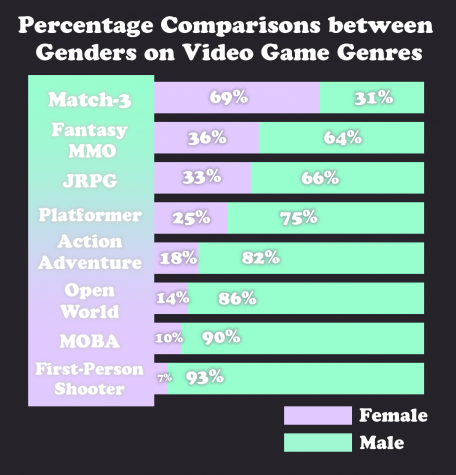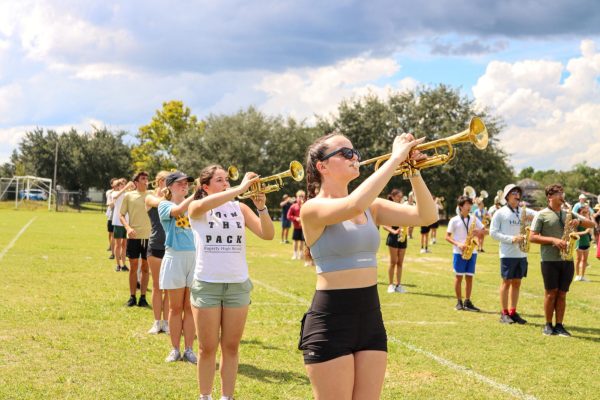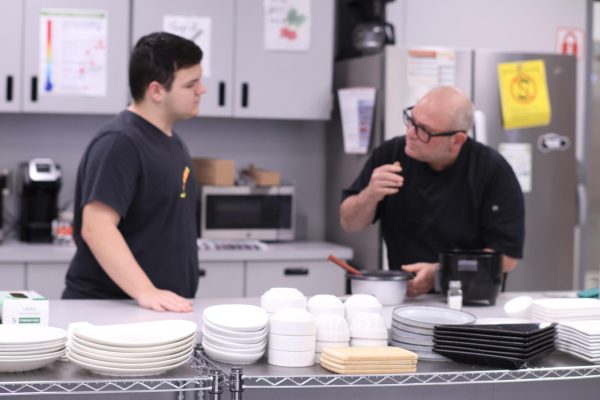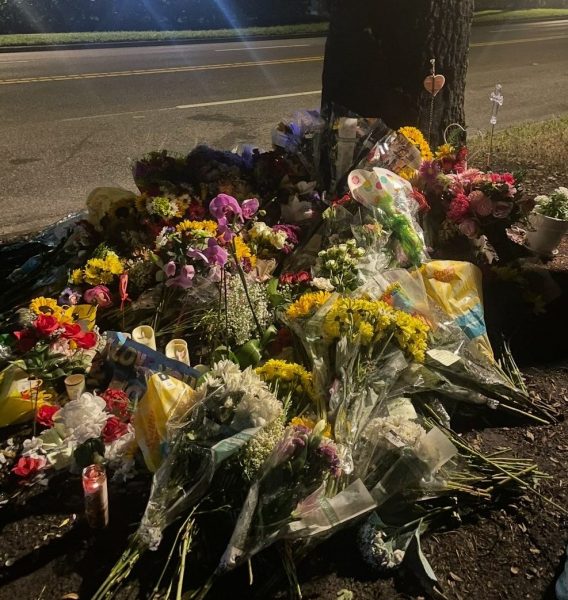Wait, you’re a Girl?
photo by Bethany Barker
Many girl gamers have their own unique setups that can include headphones, chairs, mice, and monitors.
A fun hobby to sharpen motor skills or to play around in a fantasy world, video games are for relaxation and enjoyment. While there are many different modes of gameplay, playing multiplayer is an entirely different experience; for the majority of gamers, it provides a sense of teamwork and camaraderie. For girls like sophomore Savanna Rowell, multiplayer games elicit dread and frustration. While some lobbies will treat a female teammate like they’re helpless and in need of assistance, others will ridicule and harass them for daring to play a video game.
“Once a person on Discord continually harassed me and called me a dishwasher,” Rowell said. “Another time my friend screamed at me saying I didn’t make his house right and that women are ruining the culture.”
The atmosphere of some games, especially competitive first-person shooters, are extremely unwelcoming for new players. While male players only have to focus on getting acclimated to the game, new female players have the added pressure of dealing with harassment directed towards their gender. Some girls avoid voice chat entirely, taking a major aspect of gameplay away out of fear of being bullied. Harassment has caused some girls to take long breaks and discouraged them from continuing to play.
“I took a really long break since I joined a random CS:GO lobby and they were extremely mean, solely because I was a female. It just made me not want to play,” freshman Malou Anderson said.
A common assumption about girl gamers is that they are inherently bad at competitive games. Girl gamers like Anderson work hard to prove that assumption wrong. Anderson is a part of a competitive CSGO team, who have competed in local, national, and international competitions. Her team has won a cumulative $4000 from competitions. She hopes to inspire other girl gamers to step out of their comfort zones and not be afraid to run the extra mile.
The struggles of a girl gamer do not begin or end at multiplayer games; they often run into sexism on the same level for single-player games like Minecraft, Animal Crossing and the Sims. Compared to violent, action-packed games like CS:GO, non-competitive, sandbox games are more likely to be perceived as feminine. This causes others to look down on them for their “girly” features, making people ashamed to play. Those that do play are not considered “real gamers”.
“I used to get embarrassed when I told people that I mainly played the Sims when I was younger out of fear that people would look down on me,” Senior Sabrine Desilva said. “A lot of people have internalized misogyny over the game, saying that only “girls play it”. Therefore, not countable as a game.”
Recently, more games have increased their female player base, creating more comfortable spaces for girls to play in a multiplayer setting. Games like Overwatch, which has a player base of about 16% female, more than two times the amount of other first person shooter games, have been normalizing girls in competitive games. Minecraft, which can be both single and multi-player, is another game with a large female player-base at 40% according to the Electronic Entertainment Design and Research (EEDAR). In the future, female player-bases are expected to increase as the distribution of female gamers has increased from 38% in 2006 to 46% in 2019 according to Statisa. This could indicate a more accepting and friendly shift toward women in games as time goes on.
“Girls shouldn’t have to be afraid to do something they could enjoy,” Desilva said. “If you want to play games, play games!”

Your donation will support the student journalists of Hagerty High School. We are an ad-free publication, and your contribution helps us publish six issues of the BluePrint and cover our annual website hosting costs. Thank you so much!












